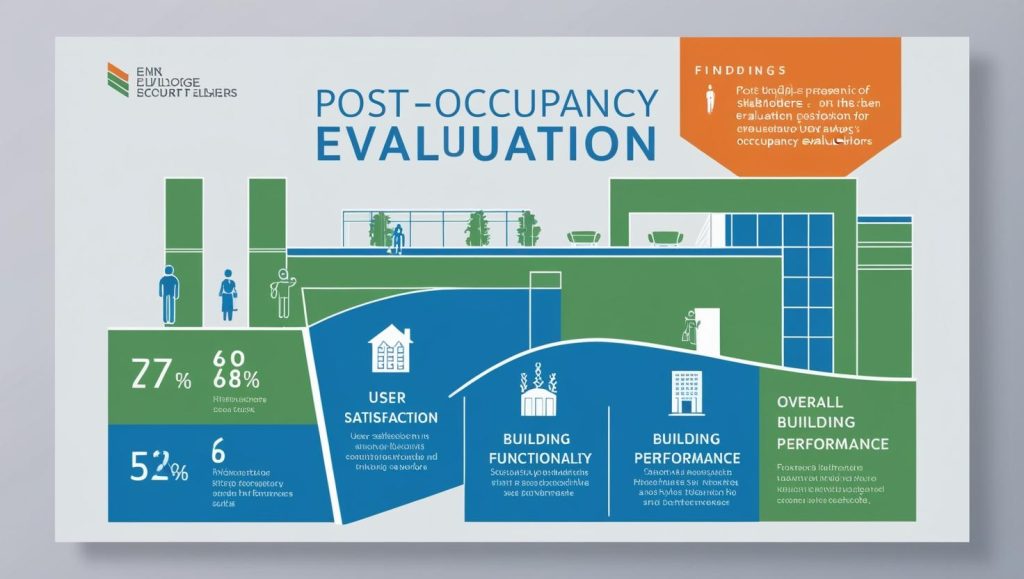Post-Occupancy Evaluation (POE) is a critical process in architecture and urban planning that assesses how buildings and spaces perform once they are in use. This method helps improve design, functionality, and sustainability by gathering feedback from users and analyzing the efficiency of a built environment. Many students find POE assignments challenging due to the multidisciplinary nature of the subject, which involves architecture, engineering, environmental psychology, and data analysis. This article provides comprehensive Post-Occupancy Evaluation Homework Help, covering key concepts, methodologies, and resources to aid students in their studies.

What is Post-Occupancy Evaluation?
Post-Occupancy Evaluation is a systematic assessment conducted after a building has been occupied for a certain period. It measures user satisfaction, operational efficiency, and overall building performance. POE provides valuable insights that help architects, engineers, and planners refine future projects.
Importance of Post-Occupancy Evaluation
POE plays a crucial role in:
- Improving Building Performance – Identifying design flaws and areas for improvement.
- Enhancing User Experience – Gathering feedback from occupants to create better spaces.
- Optimizing Energy Efficiency – Assessing environmental impact and sustainability.
- Supporting Evidence-Based Design – Using data to refine architectural and planning decisions.
For further reading on POE and its benefits, visit the International Facility Management Association (IFMA) or the Building Performance Evaluation research group.
Key Aspects of Post-Occupancy Evaluation
1. User Satisfaction Analysis
Surveys, interviews, and feedback forms help evaluate user comfort, productivity, and overall satisfaction with the built environment.
2. Environmental Performance Assessment
POE examines indoor air quality, lighting, thermal comfort, and acoustics to ensure optimal living and working conditions.
3. Energy and Sustainability Evaluation
POE assesses the building’s energy consumption, carbon footprint, and efficiency of installed systems, such as HVAC and renewable energy sources.
4. Space Utilization and Functionality
Observational studies and usage data determine how effectively space is utilized and whether design intentions meet real-world needs.
For more information on environmental assessments, visit LEED (Leadership in Energy and Environmental Design).
Methods of Conducting Post-Occupancy Evaluation
Several methodologies are used in POE, including:
1. Surveys and Questionnaires
Structured surveys help gather qualitative and quantitative feedback from building occupants.
2. Observational Studies
Researchers and architects observe user behavior and interactions with the built environment.
3. Sensor-Based Monitoring
IoT-enabled sensors collect real-time data on temperature, humidity, occupancy, and energy consumption.
4. Expert Walkthroughs
Teams of architects, engineers, and planners conduct site visits to assess building performance.
For detailed guidelines on conducting POE, explore the Whole Building Design Guide.
Challenges in Post-Occupancy Evaluation
Despite its advantages, POE faces several challenges:
- Data Collection Difficulties – Gaining access to reliable and unbiased user feedback.
- Cost and Time Constraints – Conducting POE requires resources and expertise.
- Resistance to Change – Implementing suggested improvements may face opposition from stakeholders.
- Standardization Issues – Lack of universally accepted POE methods can lead to inconsistent results.
For insights on overcoming POE challenges, visit the British Council for Offices (BCO).
How to Get Post-Occupancy Evaluation Homework Help
Many students struggle with POE assignments due to the technical nature of the subject. Here are some effective ways to get Post-Occupancy Evaluation Homework Help:
1. Online Tutoring Services
Several platforms offer expert guidance in POE, including:
- Chegg
- Tutor.com
- Coursera
2. Academic Journals and Books
Referencing credible academic sources enhances the quality of assignments. Some valuable resources include:
- Building Performance Evaluation by Wolfgang Preiser and Jacqueline Vischer
- Post-Occupancy Evaluation: Enhancing Building and Environmental Performance by Bill Bordass and Adrian Leaman
3. University Resources
Many universities provide online libraries, discussion forums, and study groups where students can collaborate and seek assistance with POE.
4. Professional Organizations
Joining architectural and facility management organizations, such as the International WELL Building Institute and CIBSE (Chartered Institution of Building Services Engineers), provides access to research papers, industry insights, and networking opportunities.
Conclusion
Post-Occupancy Evaluation is an essential process that bridges the gap between building design and real-world performance. For students studying this field, understanding key methodologies and seeking Post-Occupancy Evaluation Homework Help from reliable sources can significantly improve academic performance. Whether through online tutoring, professional organizations, or university resources, ample support is available to help students master POE techniques.


